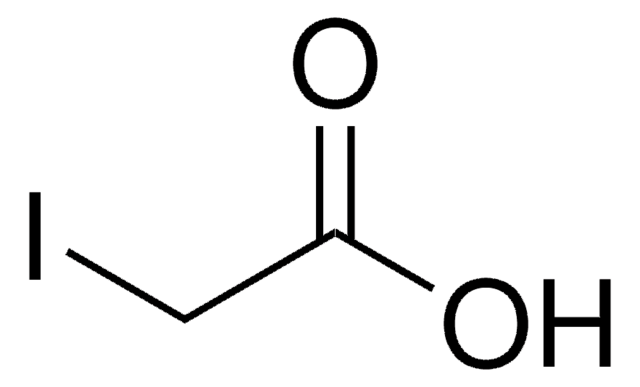14386
N-Oleoyl-D-sphingosine
≥98.0% (TLC)
Sinonimo/i:
Cer(d18:1/18:1(9Z)), (2S,3R,4E)-2-(Oleoylamino)-4-octadecene-1,3-diol, (9Z)-N-[(1S,2R,3E)-2-Hydroxy-1-(hydroxymethyl)-3-heptadecen-1-yl]-9-octadecenamide, N-(cis-9-Octadecenoyl)-D-sphingosine, N-Oleoyl-D-erythro-sphingosine, C18:1 Ceramide (d18:1/18:1(9Z)), C18:1-Ceramide
About This Item
Prodotti consigliati
Saggio
≥98.0% (TLC)
Stato
powder or solid
Composizione
carbon content, 76.67%
hydrogen content, 12.33%
nitrogen content, 2.48%
Tipo di lipide
sphingolipids
Condizioni di spedizione
wet ice
Temperatura di conservazione
−20°C
Stringa SMILE
CCCCCCCCCCCCC\C=C\[C@@H](O)[C@H](CO)NC(=O)CCCCCCC\C=C/CCCCCCCC
InChI
1S/C36H69NO3/c1-3-5-7-9-11-13-15-17-18-20-22-24-26-28-30-32-36(40)37-34(33-38)35(39)31-29-27-25-23-21-19-16-14-12-10-8-6-4-2/h17-18,29,31,34-35,38-39H,3-16,19-28,30,32-33H2,1-2H3,(H,37,40)/b18-17-,31-29+/t34-,35+/m0/s1
OBFSLMQLPNKVRW-RHPAUOISSA-N
Confezionamento
Codice della classe di stoccaggio
13 - Non Combustible Solids
Classe di pericolosità dell'acqua (WGK)
WGK 3
Punto d’infiammabilità (°F)
Not applicable
Punto d’infiammabilità (°C)
Not applicable
Scegli una delle versioni più recenti:
Certificati d'analisi (COA)
Non trovi la versione di tuo interesse?
Se hai bisogno di una versione specifica, puoi cercare il certificato tramite il numero di lotto.
Possiedi già questo prodotto?
I documenti relativi ai prodotti acquistati recentemente sono disponibili nell’Archivio dei documenti.
Active Filters
Il team dei nostri ricercatori vanta grande esperienza in tutte le aree della ricerca quali Life Science, scienza dei materiali, sintesi chimica, cromatografia, discipline analitiche, ecc..
Contatta l'Assistenza Tecnica.







